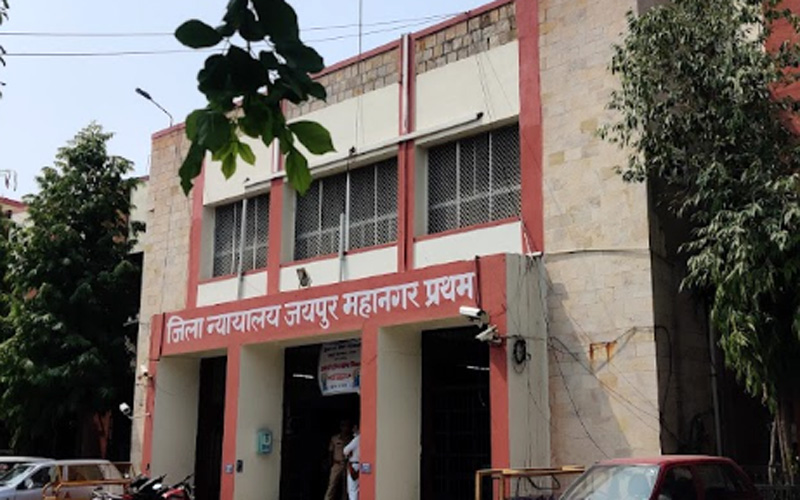5 Most Famous Jain Temples of Rajasthan
Explore Rajasthan's iconic Jain temples, blending architectural grandeur with spiritual essence. Embark on a captivating journey of serenity and awe.
Last Updated:
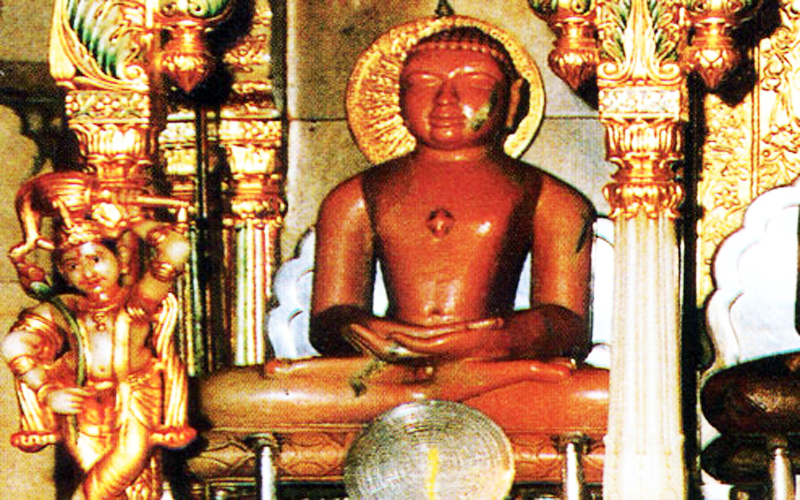
Best and most famous Jain temples in Rajasthan
JAIPUR: Step into a world of divine elegance and timeless beauty as we embark on a journey through some of Rajasthan’s most revered and famous Jain pilgrimage sites. These ancient temples stand as magnificent testaments to Jain architecture, blending intricate craftsmanship with spiritual reverence.
From the serenity of Digambar Jain Tirth Shri Mahavirji to the awe-inspiring Dilwara Jain pilgrimage in Mount Abu, and the captivating Ranakpur and Kesariaji temples, these sacred sites offer a glimpse into the rich heritage and profound beliefs of Jainism.
Let’s explore these architectural marvels, each with its unique stories to tell, and discover the spiritual sanctuary they provide for followers and visitors alike.
1. Shri Mahavirji Digambar Jain Temple, Karauli
Shri Mahavirji, located 29 km away from the Karauli district headquarters, serves as a significant center of faith for Jain followers. This temple holds great reverence among Jainism followers throughout India. Situated on the banks of the river Gambhir, it showcases a unique blend of ancient and modern Jain architecture.
Constructed primarily with white and red stones, the temple features surrounding chhatris and an impressive Dhaval Shikhar adorned with golden urns. Inside, you can find grand idols of various Jain Tirthankaras, while the temple walls are embellished with captivating golden mosaics.
A white marble Manas pillar with a statue of Lord Mahavira stands in front of the temple, alongside a beautiful chhatri housing the footprints of the revered deity. Additionally, a majestic 29-foot-high Mahavir Stupa graces the temple courtyard.

2. Dilwara Jain Pilgrimage, Mount Abu
Located in the Sirohi district of Rajasthan, the Dilwara Jain temple complex is renowned both nationally and internationally. This group of five temples was constructed between the 11th and 13th centuries and stands as a classic example of Jain architecture.
Each temple is dedicated to a different Tirthankara of Jainism. The oldest among them is the Vimal Vasahi Temple, built in 1031 AD, dedicated to the first Tirthankara. Another popular temple within the complex is the Lun Vasahi Temple, dating back to 1231 AD, which honors the twenty-second Tirthankara, Neminath.
These temples, constructed using marble, showcase exquisite craftsmanship, particularly notable in the 48 pillars adorned with intricate figures of female dancers. Notably, the roofs, doors, pylons, and crafts of the hall mandap in each temple display distinct designs, leaving visitors in awe of the exceptional stone carvings.
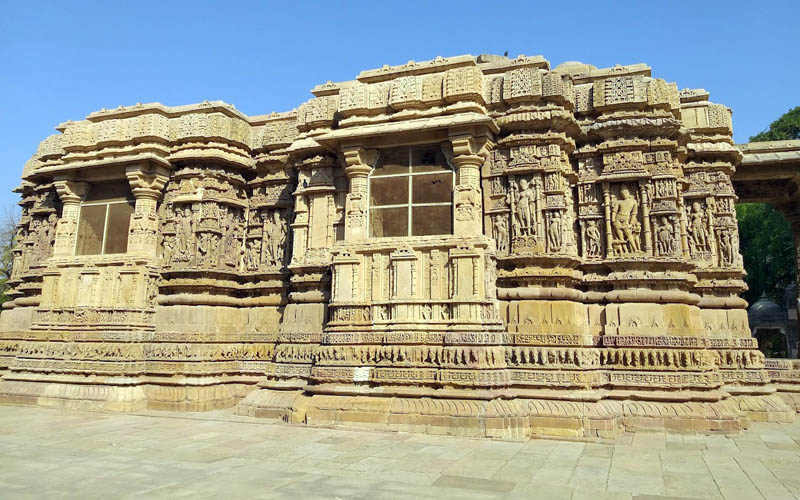
3. Ranakpur Jain Pilgrimage, Pali
Ranakpur, situated just 8 km from Sadri village in the Pali district, holds a prominent place among the five major Jain pilgrimage centers. Renowned for its beautifully carved ancient Jain temples, Ranakpur is an architectural marvel.
Also known as “Trelokya Deepak,” the main temple in Ranakpur is the Chaumukh Mandir, dedicated to Lord Adinath (Rishabhdev), the first Tirthankara. Constructed by Dhanna Shah and Ratna Shah, this temple dates back to 1439 and is characterized by its four-sided entrance. The exquisite marble temple comprises 29 spacious rooms and 14 pillars.
The temple’s corridors feature depictions of all 24 Tirthankaras, adorned with shikharas (spires) and bells. The complex also houses two temples dedicated to Neminath and Parshvanath, reminiscent of the grandeur of Khajuraho.
Additionally, an eighth-century Sun Temple in the Nagara style captivates visitors with its walls adorned with carved paintings of warriors and horses. Spanning an impressive 48,000 square feet, the temples of Ranakpur encompass 24 pavilions, 85 shikharas, and 1,444 pillars.
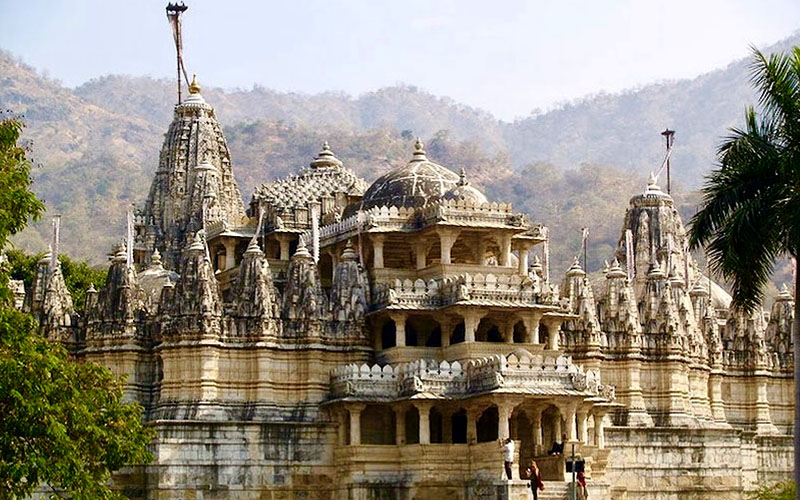
4. Kesariaji Digambar Jain Tirtha, Udaipur
Known as Kesariya ji or Kesariya Nath, this temple dedicated to Lord Rishabhdev is situated in Dhulev village, approximately 40 km from Udaipur.
Nestled amidst the caves of Aravalli on the banks of the Koyal river, this ancient pilgrimage holds great significance for Jainism. Not only Jains but also Vaishnavite Hindus, Meena and Bhil tribals, and people from various castes worship the Rishabhdev Temple.
The temple houses a black-colored idol of Lord Adinath or Rishabhdev, the first Jain Tirthankara. Pilgrims offer abundant saffron to Lord Rishabhdev, which led to the temple being named Kesariaji. Among the tribal communities, this revered deity is fondly known as “Kalia Baba.”
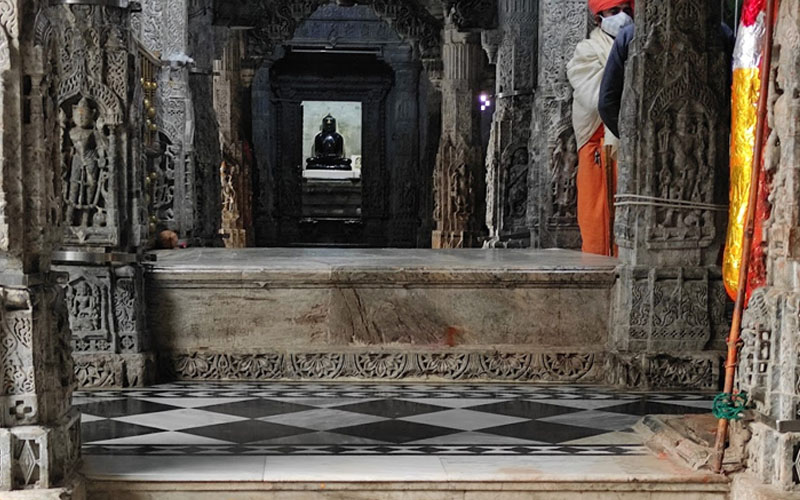
5. Nasiyan Jain Temple, Ajmer
Popularly known as the “Lal Mandir,” the Nasiyan Temple in Ajmer is one of the splendid Jain temples in Rajasthan, following the likes of Ranakpur and Mount Abu.
Construction of this temple commenced in 1864 AD and was completed in 1895 AD. The temple is dedicated to the first Jain Tirthankara, Rishabhdev.
The second floor of this two-story structure houses a large hall featuring masterpieces that beautifully express Jainism and its philosophy.
A captivating museum is also attached to the temple. The first floor, called the “Swarna Nagri Hall,” showcases gold replicas of Jain temples from across the country. It is estimated that approximately 1000 kg of gold was used in the construction of this magnificent temple.
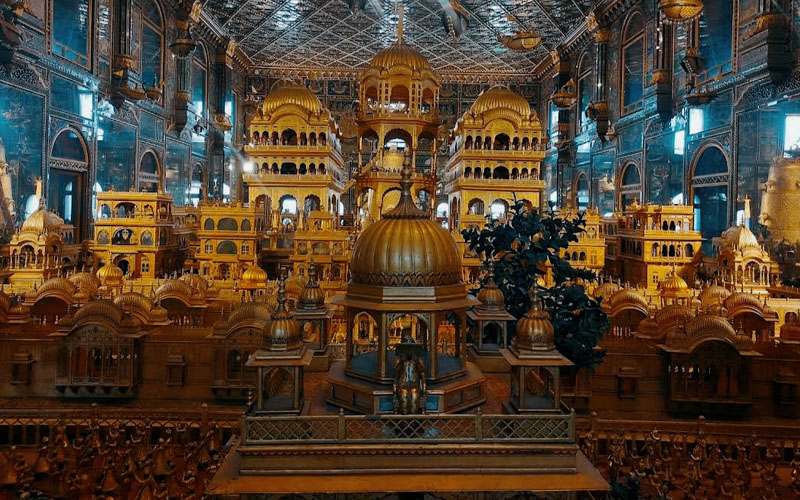
Conclusion
The Jain temples showcased in this journey are not just architectural wonders but also embodiments of devotion, faith, and cultural heritage.
These sacred sites hold immense spiritual significance for Jain followers, drawing pilgrims and visitors from far and wide.
From the intricate stone carvings to the majestic spires and tranquil surroundings, these temples provide a sanctuary for reflection, introspection, and connection with the divine.
As we conclude our exploration of these historic Jain temples, let us marvel at the timeless beauty and profound spiritual energy that continues to inspire and uplift all who set foot in these hallowed grounds.


